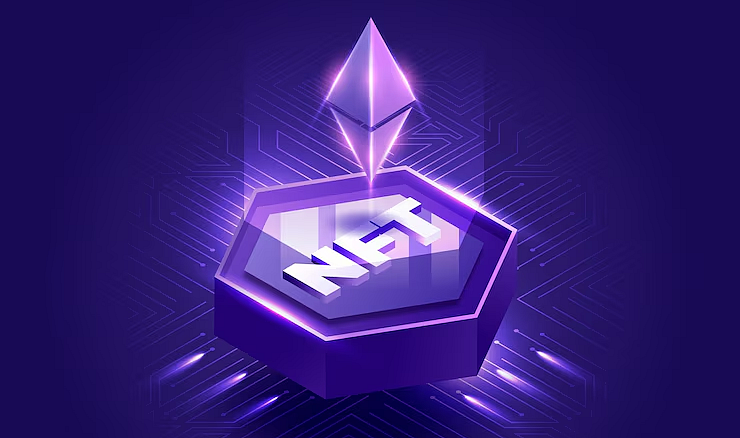A Winter of Hesitation
A trust, after all, is a kind of currency in the erratic and fast-moving world of digital assets. When that trust collapses, it sends shock waves far beyond balance sheets and valuations. It penetrates the entire soul of the ecosystem. That was what happened when a global major international crypto exchange collapsed in late 2022: it caused a crisis in the markets and deep introspection among India's growing crypto community.
They were not merely reacting to a foreign fiasco; for Indian exchanges, it would be a watershed moment. The ripple effects came from afar, but they perturbed local sentiment, set off regulatory reflexes, and set urgent questions about the robustness of India's own digital asset ecosystem. That created a crisis of confidence and something of an urgent need for course correction.
Rebuilding from the Rubble
The collapse acted as a chilling effect on retail investors in India, most of whom had entered the crypto space during the pandemic boom. Optimism turned to suspicion overnight. Daily trading volumes dried up. First-time investors ran away, or stopped trading, unsure of whom to trust. The once-booming market had begun to bear traces of soberness.
With credibility running to red, Indian exchanges urgently had to act-not just to save themselves but also to reassure. With no formal governmental regulations present at that time, self-regulation emerged like a life-jacket. The focus reoriented from aggressive marketing and coin listings to credibility-building, compliance, and transparent communication with users. It regrouped around creating systems users would trust, even as the entire sector found itself in turbulent waters.
Indian Exchange Set for Transparency
An invisible change occurred-understanding. Customer trust is traditionally replaced-with or without-a clear understanding of a platform's solvency. Users began to legitimately believe about an asset's holding, operational reserves, and risk frameworks on Indian exchanges. Terms like "proof of reserves" will soon be found to the ends of most layman's vocabularies once platforms correlate points through such niches as audits and security protocols to strengthen user confidence.
Transformation wasn't skin-deep; it involved a back-end revamping, third-party audits, and an admission that trust once lost is rarely regained. Exchanges learned the ropes of communication better, explaining how they keep user funds safe and pricking the most apolitical customer's curiosity on systems and protocols that traditionally wouldn't have warranted his trading attention.
Regulation: From Sanction to Support
Prior to the crisis, regulation was seen as a hinderance on innovation with respect to anything crypto in India. However, that opinion changed after the crash. Foreign counterparts were allowed to run riot due to a lack of regulation. Indian firms wanted to keep the same things at bay, so they engaged in an active dialogue with policymakers and compliance experts.
The transition from an obstructed view to a collaborative one is very significant. Instead of lobbying for regulations to go easy on them, domestic exchanges began making their voices heard in favor of clear and realizable standards. The intention was not to escape regulation but to shape it. They understood that the path to gaining institutional maturity and viability on a longer horizon was through honest engagement and disciplined frameworks.
Therefore, in 2023 and 2024, more and more efforts were undertaken to bring the operations of domestic exchanges in India in accord with the rapidly changing standards of the rest of the world. From KYC compliance to data localization requirements, domestic exchanges started demanding and implementing much higher internal standards, often beyond what was strictly required. This meant serious players versus the opportunists—and that the very established readiness for both the regulators and the users that India's crypto arena is hitting adulthood."
Educating the Masses, One User at a Time
There was the necessity of grassroots outreach besides institutional response to try and renew public trust. Hence, Indian exchanges started spending hugely on educational activities-not with the intent of attracting new users but informing those actually there. From risk management workshops, webinars, and influencer collaborations, and so forth- became as common as advertisements used to be.
Workshops, webinars, influencer brokerage-this is no more all about talking possible returns. No, it is really about improving literacy among users. In the sector where there is potential for the hype to spread misinformation, this educational effort serves both-the purpose of awareness and the signalling of responsibility.
A very subtle but important shift followed in the way that exchanges presented themselves. Quite similar to trading, such platforms had on their account very strong hopes on skyrocketing sales and overnight gains. Post-crisis, the dominant theme has become sustainability. Exchanges thus redefined safety, reliability and long-term value creation rather than volatility and thrill.
Business models are also changing. Relying on transactional revenues, exchanges may start diversifying their lines with premiums, institutions, and solutions to their technology infrastructures. It is a sign of a maturity not only in strategy but also in vision.
The Road Ahead
The crisis they are seeing nowadays has definitely left a mark on the path of progress. But if lessons are to be learned from India's post-crisis scenario in the crypto domain, it's that resilience isn't just about weathering a storm but learning from one. Indian exchanges, for half of their problem, did not await rebounding sentiments; they earned it directly back, one user at a time.
Trust is intangible, but it is now at the very crux of how these platforms operate. Risk management, transparency, and user education—which were earlier marginal—are now central pillars of this. And, even while regulation is not yet clarified in some areas, the overall direction is very clear: the grow-up for India's crypto sector.
And as the whole world looks, as the whole regulatory process continues, the exchanges from India present a strong case study of responsible reinvention. Certainly, the crisis shook foundations, but it also created fires that will ensure a more sustainable, accountable ecosystem—not just based on new ideas but on integrity as well.














